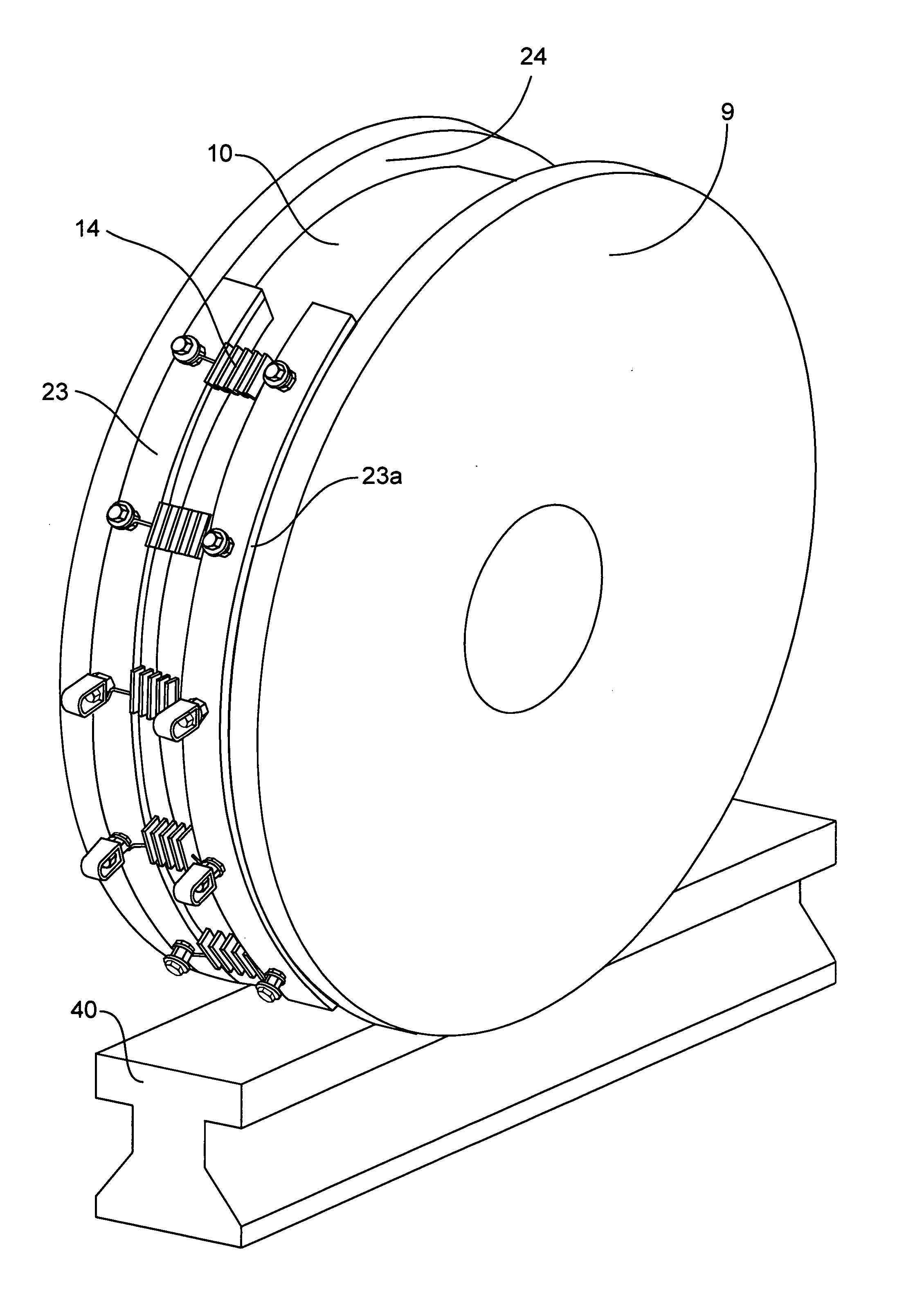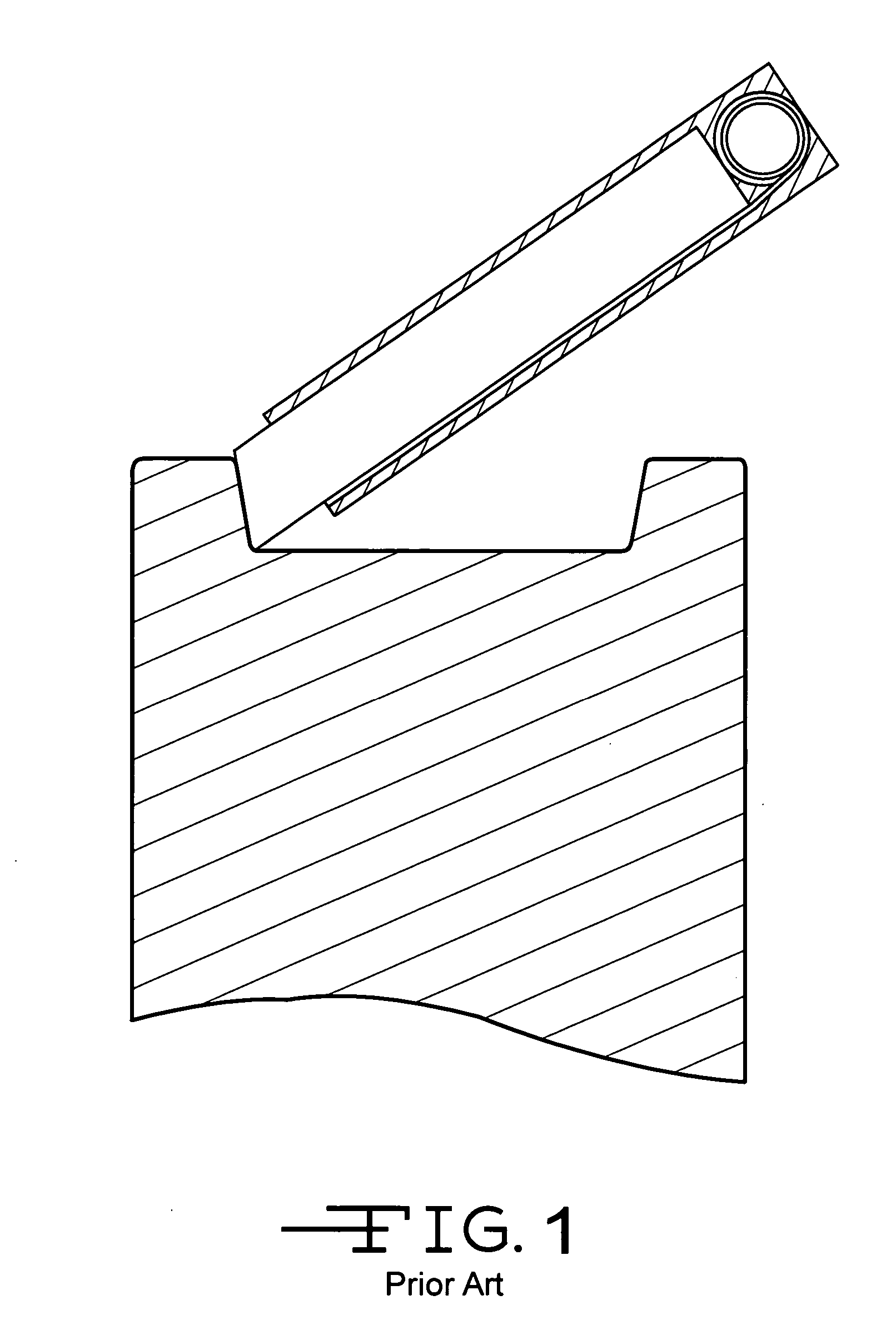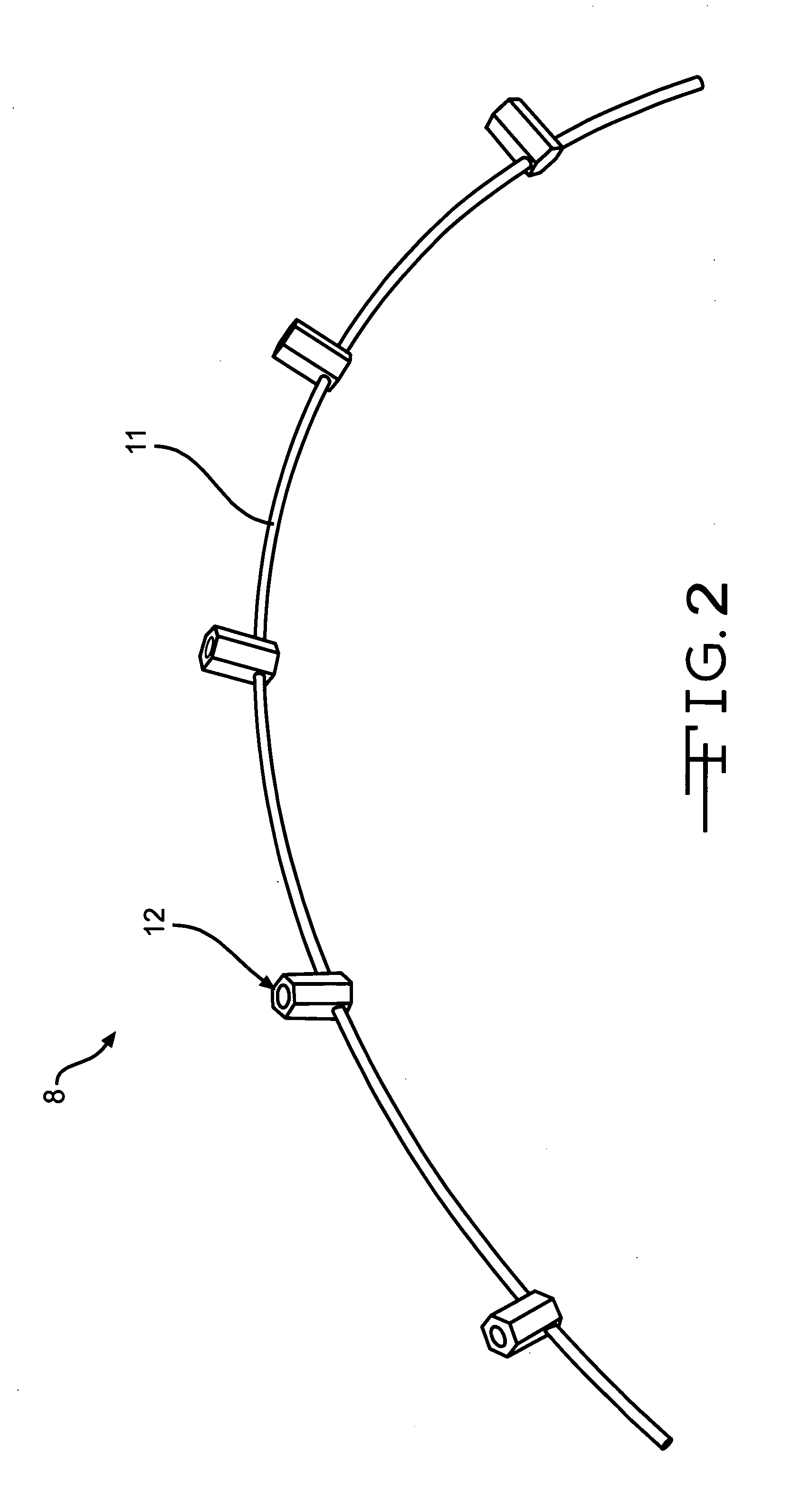Wheel flange lubrication system
- Summary
- Abstract
- Description
- Claims
- Application Information
AI Technical Summary
Benefits of technology
Problems solved by technology
Method used
Image
Examples
Embodiment Construction
[0018] The following description is a preferred embodiment by way of example only and without any limitation to the combination of features for carrying out the invention.
[0019] The present invention relates to a system for lubricating wheel flanges using a rigid lubrication block. Various lubricants may be used including microporous polymeric lubricants, graphite, molybdenum disulfide, impregnated polymers, solid grease, sponge, sintered bronze, impregnated felt, PTFE (PolyTetraFluoroEthylene) and UHMWPE (UltraHighMolecularWeightPolyEthylene). Other lubricants may also be used. A preferred lubricant is the microporous polymeric lubricant which has excellent wear characteristics and provides a controlled release of the lubricant from the block. This type of material is taught in U.S. Pat. Nos. 3,541,011; 3,547,819; and 3,729,415.
[0020] The lubricant block or stick is composed of at least 30% solids. The lubricant block may have various shapes. The shape, amount of surface contact,...
PUM
 Login to View More
Login to View More Abstract
Description
Claims
Application Information
 Login to View More
Login to View More - R&D
- Intellectual Property
- Life Sciences
- Materials
- Tech Scout
- Unparalleled Data Quality
- Higher Quality Content
- 60% Fewer Hallucinations
Browse by: Latest US Patents, China's latest patents, Technical Efficacy Thesaurus, Application Domain, Technology Topic, Popular Technical Reports.
© 2025 PatSnap. All rights reserved.Legal|Privacy policy|Modern Slavery Act Transparency Statement|Sitemap|About US| Contact US: help@patsnap.com



